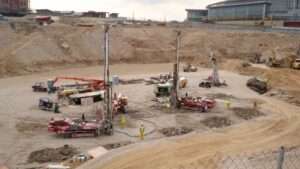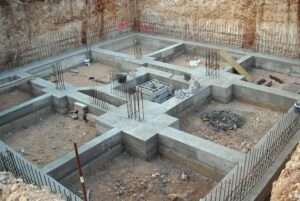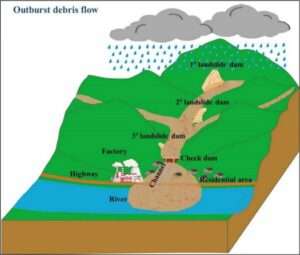Consolidation grouting is a pivotal technique in ground engineering, designed to enhance the structural integrity of soil and rock by filling voids and fractures with grout. This method plays a vital role in improving load-bearing capacity, reducing settlement, and ensuring the long-term stability of infrastructure projects.
What is Consolidation Grouting?
Consolidation grouting, also known as compaction grouting, involves the injection of grout into the ground to fill voids, fractures, or other discontinuities. The process is often employed to stabilize loose or weak ground conditions and improve the density and strength of the surrounding material. It is particularly effective in scenarios where existing foundations require reinforcement or where soil conditions need to be enhanced before construction.
How Does Consolidation Grouting Work?
The consolidation grouting process typically involves the following steps:
1.Site Assessment: A thorough analysis of the soil or rock conditions is conducted to determine the need for grouting and identify the locations of voids or weaknesses.
2.Drilling: Boreholes are drilled to reach the target zones where grouting is required.
3.Grout Injection: Grout is pumped into the ground under controlled pressure, filling voids and compacting surrounding soil or rock.
4.Monitoring and Testing: The effectiveness of the grouting process is monitored through instrumentation and post-grouting tests.
Types of Grouts Used
The choice of grout depends on the project’s requirements and the characteristics of the ground material. Common types include:
- Cementitious Grouts: Ideal for filling large voids and improving strength in coarse soils or fractured rock.
- Chemical Grouts: Low-viscosity solutions used for fine soils or areas requiring precise infiltration.
- Polymer-Based Grouts: Flexible and durable materials suitable for dynamic environments.
Applications of Consolidation Grouting
Consolidation grouting is versatile and widely used in various engineering and construction scenarios, including:
1.Foundation Reinforcement: Strengthening foundations to support heavy loads and prevent settlement.
2.Dam and Embankment Stability: Enhancing the integrity of dams and embankments by filling voids and reducing seepage.
3.Tunneling and Underground Construction: Stabilizing loose ground around tunnels and shafts.
4.Sinkhole Remediation: Filling underground voids to prevent sinkhole formation.
5.Slope Stabilization: Improving the stability of slopes and preventing landslides.
Advantages of Consolidation Grouting
Consolidation grouting offers several key benefits:
- Improved Stability: Increases the load-bearing capacity of soil and rock.
- Reduced Settlement: Minimizes ground movement under structural loads.
- Adaptability: Can be tailored to suit various soil types and project requirements.
- Cost-Effectiveness: Reduces the need for extensive excavation or soil replacement.
- Environmentally Friendly: Limits environmental disturbance by targeting specific areas.
Challenges and Considerations
Despite its advantages, consolidation grouting requires careful planning and execution. Key considerations include:
- Ground Conditions: Accurate assessment of soil and rock properties is essential.
- Grout Selection: The choice of grout must align with the project’s goals and ground characteristics.
- Injection Pressure: Excessive pressure can lead to hydraulic fracturing or unintended ground displacement.
- Quality Control: Continuous monitoring ensures uniform grout distribution and effectiveness.
Conclusion
Consolidation grouting is an indispensable technique in modern ground engineering, offering reliable solutions for stabilizing and strengthening weak or compromised soils and rocks. By addressing foundational weaknesses with precision and efficiency, this method ensures the durability and safety of infrastructure, making it a cornerstone of sustainable construction practices.







